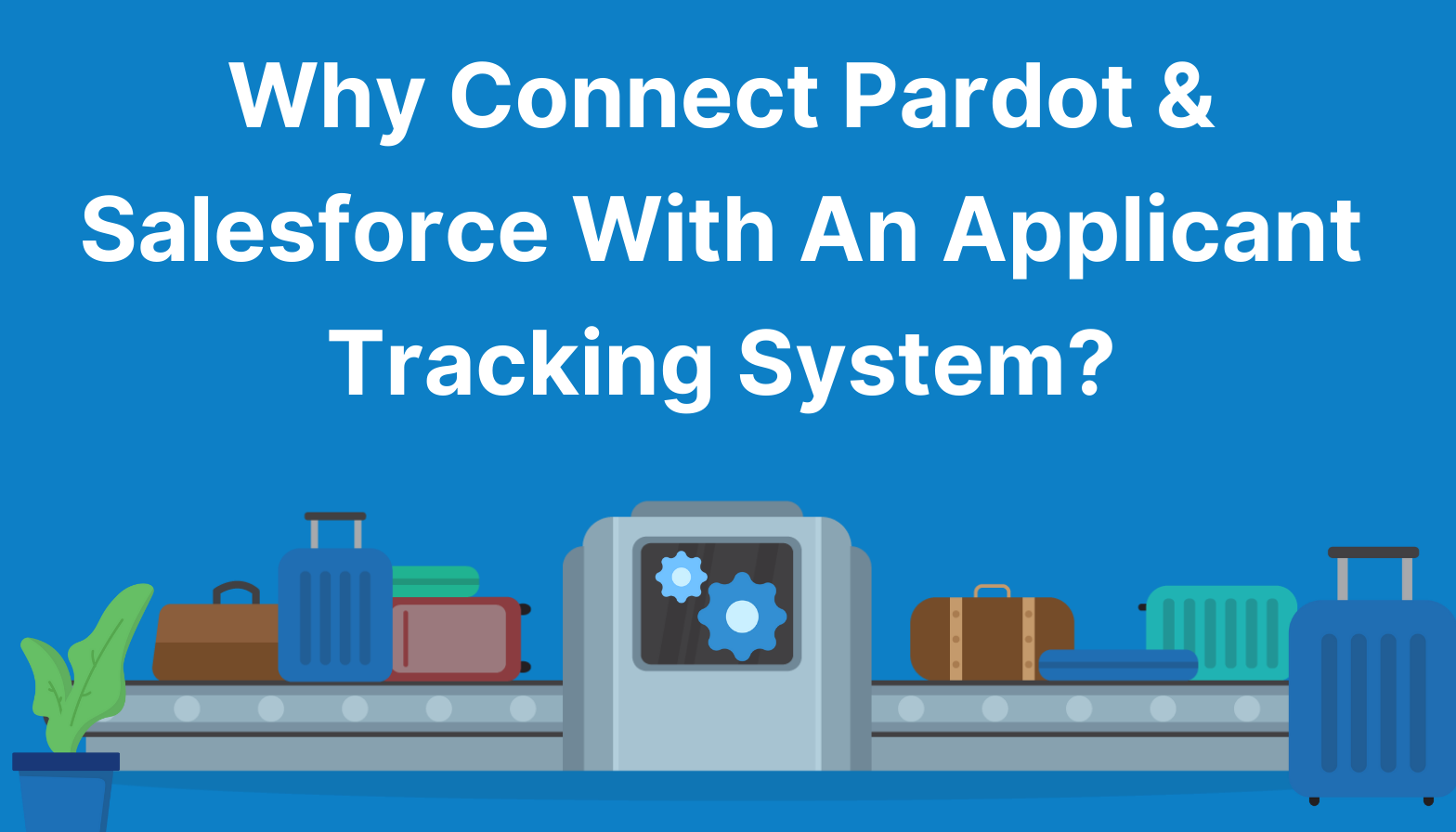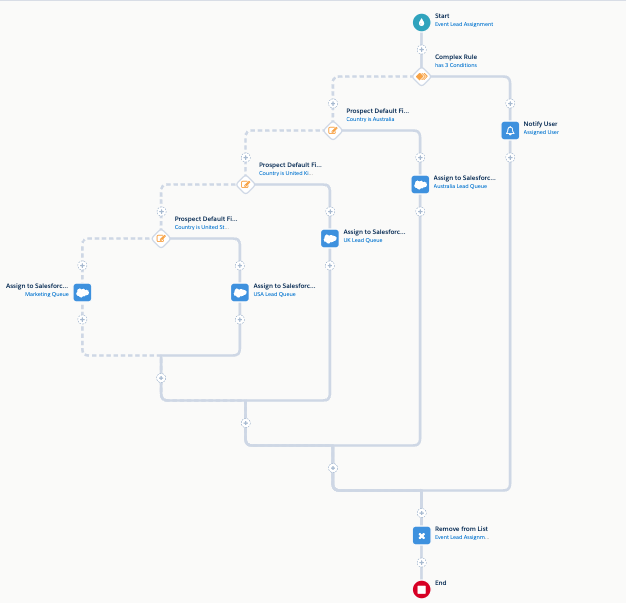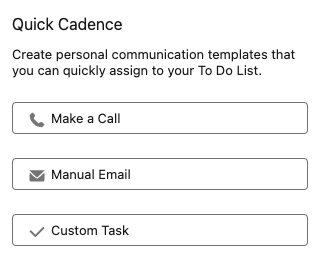Why Connect Pardot & Salesforce With An Applicant Tracking System
- November 29, 2021
- Marcloud Consulting, Salesforce and Pardot


Why timely recruitment is so challenging
At risk of sounding like a wily recruitment veteran, there are three certainties in life: death, taxes, and staff turnover. Therefore opportunity always exists for recruiters (including for those recruiting in the non-profit sector).
The problem is that while staff turnover is inevitable, it can be really difficult to predict. It isn’t a regular or seasonal resource, there’s no renewal cycle, it tends to happen quite sporadically.
Long-serving employees can leave out of nowhere and need replacing, investment could be won, or conversely there could be redundancy restructuring. Or the company could even be facing a new technology project and have a compelling need for specialist resources.
This is why so much of recruitment relies on relationship building and gathering insights, as the window of opportunity is so small. When there’s no recruitment need, these same businesses want nothing less than to be contacted by a recruiter over the phone — it’ll often result in a big fat DNC on that account!
When an opportunity does arise, this process needs to be managed very closely on both the client and candidate side. Recruitment budgets can disappear, job specs can change, candidates can go wandering, and lapses in communication often result in anxiety, which can jeopardise the placement.
So bearing that in mind, there are two main technology challenges in recruitment:
How do I use tech to identify recruitment opportunities?
And then
How do I use tech to manage the recruitment process?
There are, of course, disparate solutions for these two distinct challenges, but very rarely will you find an integrated solution that takes care of both.
Using Salesforce as an Applicant Tracking System
If CRM were a sport then Salesforce would be the heavyweight champ. But when it comes to the recruitment space, even Salesforce won’t go the distance, at least not out of the box.
Firstly, you’re dealing with both employers and candidates, two completely different types of prospect. One of these has a company name, a hiring manager, a budget holder, deadlines, stakeholders; the other has none of these, they’re an individual.
While managing employers is feasible on Sales Cloud, many Salesforce users opt to build custom objects for Candidates, with a series of complex processes and workflows to follow. Managing Candidate relationships may be possible in this way, but it’ll take some serious development work to track the full application process from initial CV upload through past the second interview.
That’s why it makes sense to either integrate your ATS with Salesforce or, even better, use a Salesforce-native ATS. Applications like Bullhorn for Salesforce enable you to utilise all the relationship management, workflow, and automation benefits of Salesforce, while offering a better candidate experience, with application tracking portals and real-time closed communication with their recruiter.
Pardot helps you strike while the iron is hot
ATS provides a brilliant way of managing all stages of the opportunity, but this will merely be an expensive toy if you don’t first focus your attention on identifying these opportunities.
Combine your ATS with Pardot to first harvest recruitment opportunities using timely and tailored marketing automation, before giving candidates a smooth and seamless experience from application through to onboarding.
Marketing automation tools like Pardot will go a long way in providing timely insights into a company’s recruitment plans, drawing insights from marketing interactions across social media and email, not to mention landing page visits and form completions.
While it isn’t a magic bullet, over time you’ll start to build detailed profiles on your prospects, learning everything from their company headcount to their opinions on employment benefits. And crucially, when the time is right to make a new hire, you’ll know about it.
Here are just a few examples of how connecting Pardot with your ATS can lead to faster and more successful recruitment:
1. Know when there’s a need
The instant an employer opens an email about your latest hot candidates, visits one of your key website landing pages, or downloads a PDF, you can fire an automated campaign to nurture the employer with more-focused, tailored messaging.
Or you could even notify the relevant recruiter that this is now a red-hot lead, and that a phone call may be helpful in the circumstances. The sentiment is the same; use Pardot to listen for specific actions that imply a need and have a system in place to deal with these automatically, so as not to lose that opportunity.
2. Flesh out a candidate’s resume
Pardot isn’t just a listening tool, it’ll also help you build comprehensive records for your prospects. You may be dealing with candidates who’ve only applied for one job with you before, or only partially completed their candidate profile, and so you really aren’t sure where their skills lie.
Why not send them an email about live job opportunities or even training courses, with links to resources where you can draw inferences of their skills or specialisms. Or even simpler, you could just ask them outright! When they click a link, it’ll add a relevant marker to their record and help you build a more comprehensive candidate profile — before long, you’ll know exactly what type of role they’d be suitable for.
3. Distinguish between client and candidate
Pardot can also help you grade the type of prospect you’re dealing with so you can be sure how to market (and sell) to them.
Offering downloadable resources around education or research in your talent ecosystem is a great way to generate soft leads for the business. The problem is when you’re dealing with two very distinct pots of prospects (client v candidate), it can be difficult to distinguish who they are from the first interaction.
Pardot enables you to both grade and score prospects over time. This means drawing inferences from their behaviour to determine which type of prospect they should be treated as, and then how close they are to entering ‘buying mode’. It’s not only valuable for marketing and sales, but it can be hugely beneficial for database cleanup.
Don’t go in blind
The crucial part is you aren’t going in blind. You don’t have to rely on manually gathering insights; they’ll be harvested for you in the background as your prospects interact with granular marketing assets over weeks and months. When they reach your qualification criteria, whatever that may be, you can strike while the iron is hot to ensure you don’t waste their time, or your own.
From there, using ATS with Salesforce will help take this red-hot lead and turn it into a deal. All the information you’ve gathered using Pardot will be readily accessible, candidates and clients will know exactly where they are in the application, interview, and placement process, and you’ll have masterminded a complete 360 placement without making a single cold call. Job well done.
Of course, at MarCloud setting up integrations and helping clients get the most out of Pardot and Salesforce is something we’re apt at. So if you’d like a hand connecting your systems or with strategy and campaign management, send us a message.
This Pardot article written by:
Marcloud Consulting
Get inspiration for your next marketing automation program with our growing library of helpful Pardot content.
Original Pardot Article: https://marcloudconsulting.com/sf-basics/pardot-salesforce-applicant-tracking-system
Find more great Pardot articles at https://marcloudconsulting.com/articles/
Pardot Experts Blog
We have categorized all the different Pardot articles by topics.
Pardot Topic Categories
- Account Based Marketing (ABM) (7)
- Business Units (14)
- ChatGPT / AI (3)
- Completion Actions (5)
- Connectors (10)
- Custom Redirects (4)
- Data Cloud (1)
- Demand Generation (8)
- Dynamic Content (6)
- Einstein Features (12)
- Email Delivery (17)
- Email Open Rates (3)
- Pardot A/B Testing (2)
- Email Mailability (16)
- Do Not Email (1)
- Double Opt-in (2)
- Opt Out / Unsubscribe (14)
- Email Preferences Page (6)
- Engagement Studio (16)
- Industries (1)
- Non Profit (1)
- Landing Pages (9)
- Lead Generation (1)
- Lead Management (13)
- Lead Routing (3)
- Lead Scoring (16)
- Leads (3)
- Marketing Analytics – B2BMA (9)
- Marketing Automation (1)
- Marketing Cloud (3)
- Marketing Cloud Account Engagement (4)
- Marketing Cloud Growth (1)
- New Pardot Features (6)
- Opportunities (2)
- Optimization (2)
- Pardot Admin (62)
- Duplicates (1)
- Marketing Ops (1)
- Pardot Alerts (1)
- Pardot API (2)
- Pardot Automations (3)
- Pardot Careers (12)
- Pardot Certifications (4)
- Pardot Consulting (1)
- Pardot Cookies (3)
- Pardot Custom Objects (3)
- Pardot Email Builder (8)
- Pardot Email Templates (9)
- HML (6)
- Pardot Events (16)
- Pardot External Actions (1)
- Pardot External Activities (4)
- Pardot Forms (29)
- Form Handlers (8)
- Pardot Integrations (20)
- Data Cloud (1)
- Slack (1)
- Pardot Lead Grading (5)
- Pardot Lead Source (2)
- Pardot Lightning (1)
- Pardot Migration (1)
- Pardot Nurture / Drip Campaigns (1)
- Pardot Personalization (3)
- Pardot Profiles (1)
- Pardot Releases (18)
- Pardot Sandboxes (2)
- Pardot Segmentation (5)
- Pardot Strategy (7)
- Pardot Sync (2)
- Pardot Sync Errors (1)
- Pardot Tracker Domains (5)
- Pardot Training (3)
- Pardot Vs Other MAPs (4)
- Pardot Website Tracking (2)
- Reporting (21)
- Salesforce and Pardot (31)
- Marketing Data Sharing (2)
- Pardot Users (3)
- Salesforce Automation (4)
- Salesforce Flows (1)
- Salesforce Campaigns (20)
- Salesforce CRM (3)
- Record Types (1)
- Salesforce Engage (3)
- Salesforce Queues (2)
- Security and Privacy (1)
- Tags (3)
- The Authors (497)
- Cheshire Impact (9)
- Greenkey Digital (50)
- Invado Solutions (37)
- Jenna Molby (9)
- Marcloud Consulting (6)
- Nebula Consulting (58)
- Pardot Geeks (42)
- Salesforce Ben | The Drip (235)
- SalesLabX (2)
- Slalom (4)
- Unfettered Marketing (45)
- Uncategorized (1)
- Website Tracking (2)
- Website Search (1)
More Pardot Articles
See all posts
This Pardot article written by:
Marcloud Consulting
Get inspiration for your next marketing automation program with our growing library of helpful Pardot content.
Original Pardot Article: https://marcloudconsulting.com/sf-basics/pardot-salesforce-applicant-tracking-system
Find more great Pardot articles at https://marcloudconsulting.com/articles/




